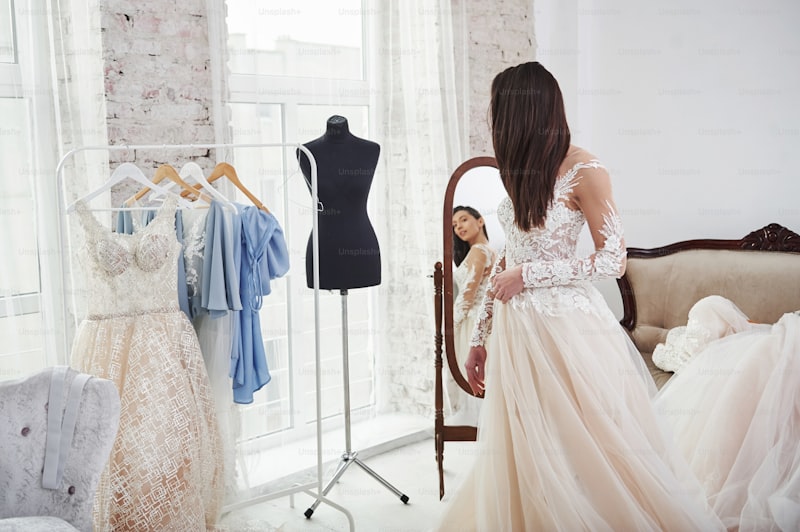Cultural Perspectives on Renting Dresses: A Global Trend
Introduction to Dress Rental Culture
In recent years, the concept of renting dresses has gained traction across various cultures and demographics. From the dazzling streets of Milan to the bustling markets of Bangkok, cultural perspectives on renting dresses reveal how fashion, economy, and sustainability intertwine to shape today’s consumer behaviors. This article explores the global landscape of dress rentals, examining societal norms, financial implications, and ecological consciousness that influence this trend.
The Global Shift: Why Renting?
The traditional model of fashion ownership is being challenged by a growing demand for sustainability and affordability. Below are some key reasons why people are turning to rental services:
| Reasons for Renting Dresses |
| Sustainability: Reducing waste and promoting circular fashion. |
| Affordability: Accessing high-end fashion at lower prices. |
| Variety: Offering a wide range of styles for different occasions. |
| Convenience: Avoiding storage and maintenance of outfits. |
| Social Trends: Influenced by social media and celebrity endorsements. |
Regional Insights: Dress Rental Across Different Cultures
North America: Embracing the Sharing Economy
In the United States and Canada, the rental dress industry has seen astronomical growth. With brands like Rent the Runway leading the charge, consumers view renting as a savvy way to enjoy luxury without the hefty price tag. This culture is often complemented by social media influencers showcasing their rented outfits, further normalizing the practice. Additionally, rental services have become a go-to for special occasions like weddings and proms, where high-priced attire is only worn once.
Europe: Tradition Meets Modernity
From the fashion capitals of Paris to London, European cities reflect a unique fusion of tradition and modernity in dress renting. Countries like Italy emphasize craftsmanship and vintage styles in their rental offerings. Similarly, UK-based platforms prioritize eco-friendliness and collaboration with designers focused on sustainability. Renting dresses not only serves the consumer but also supports local designers and promotes a shift towards more responsible fashion practices.
Asia: A New Frontier in Fashion Rental
In Asia, the rental dress market is burgeoning, particularly in countries like China and India. With an increase in middle-class consumers and a burgeoning interest in fashion, rental services have become popular for weddings and festive seasons. For example, in India, platforms cater to specific cultural needs, offering exquisite traditional attire on rent. China’s rapid urbanization also sees young adults gravitating towards rental services as a means to stay fashionable in a fast-paced society where trends evolve quickly.
Australia and New Zealand: Eco-Conscious Choices
In down under, Australians and New Zealanders are increasingly aware of fast fashion's impact on the environment. Dress rental services offer a sustainable alternative, appealing especially to younger generations committed to environmental causes. Affordable luxury and the opportunity to wear designer labels for formal events without breaking the bank are significant draws for consumers in this region.
Economic Impact of Renting Dresses
The rise of dress rental services has far-reaching economic implications. Here are some ways it impacts the fashion economy:
| Economic Effects |
| Job Creation: New platforms create jobs in logistics, customer service, and marketing. |
| Support for Designers: Increased exposure can lead to new collaborations with rental brands. |
| Reduction in Fast Fashion Sales: A shift in consumer behavior impacts traditional retailers. |
| Consumer Spending: Renters often spend on additional services (cleaning, styling). |
Ecological Considerations: Sustainable Fashion
As environmental awareness grows, the ecological benefits of renting dresses become increasingly relevant. The fashion industry is a significant contributor to global pollution, with estimates suggesting it accounts for 10% of carbon emissions. Renting dresses promotes second-hand usage and reduces waste, appealing to environmentally conscious consumers. Here are some ecological advantages:
| Ecological Benefits of Renting |
| Waste Reduction: Less fabric ending up in landfills. |
| Energy Savings: Less water and energy consumed in production. |
| Circular Economy: Promoting reuse and recycling within the fashion industry. |
| Awareness: Educating consumers on sustainable practices. |
Challenges Facing Dress Rental Services
Despite the numerous advantages, the rental dress industry faces various challenges that can hinder its growth:
- Hygiene Concerns: Consumers may be apprehensive about wearing previously used items.
- Fit Issues: Sizing discrepancies between brands can lead to dissatisfaction.
- Market Saturation: The emergence of many rental services creates fierce competition.
- Maintenance Costs: Cleaning and maintaining the dresses can burden rental services.
The Future of Renting Dresses
As the fashion industry continues to evolve, renting dresses is likely to become more mainstream. With technological advancements and increased awareness of sustainability, the rental model could integrate innovations like virtual fitting rooms and artificial intelligence to enhance customer experience. Countries with high fashion consumption may soon see more hybrid models combining renting with purchasing options, appealing to a broader audience.
Conclusion: Embracing a New Fashion Paradigm
In summary, cultural perspectives on renting dresses reveal a significant shift toward a more sustainable and financially accessible mode of fashion consumption. From North America’s sharing economy to Asia's rapidly expanding market, the global inclination for renting over owning reflects changing societal values. As we move towards a more environmentally conscious future, both consumers and brands must adapt to this new reality. Renting dresses is not just a trend; it's a reflection of a broader movement towards responsible fashion consumption that balances style, affordability, and sustainability.
Recommendations: For individuals interested in renting dresses, consider the following:
- Research local rental companies and read reviews.
- Understand rental policies and ensure accurate fitting.
- Opt for eco-friendly services wherever possible.
- Engage with communities that share similar sustainability values.
